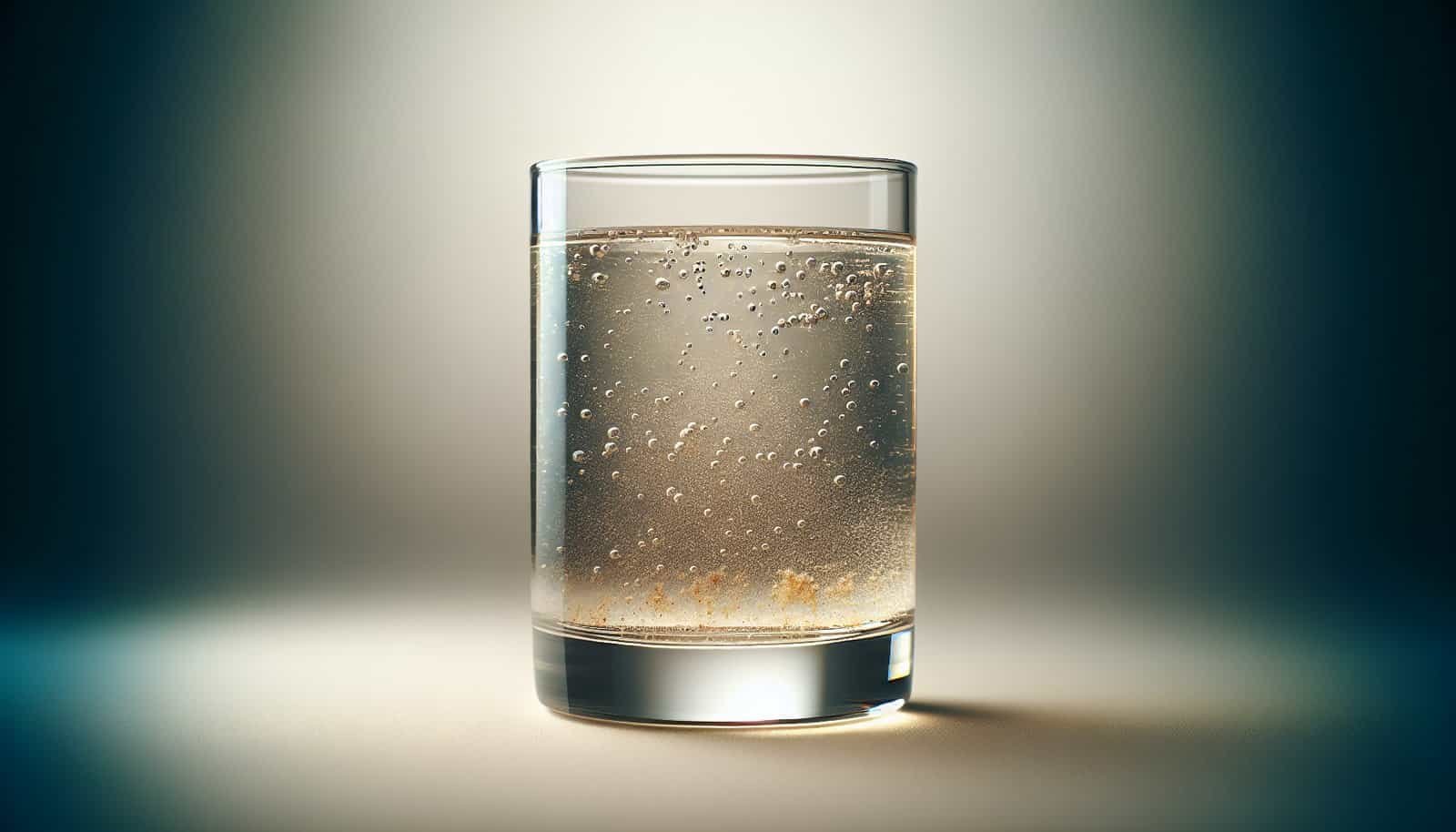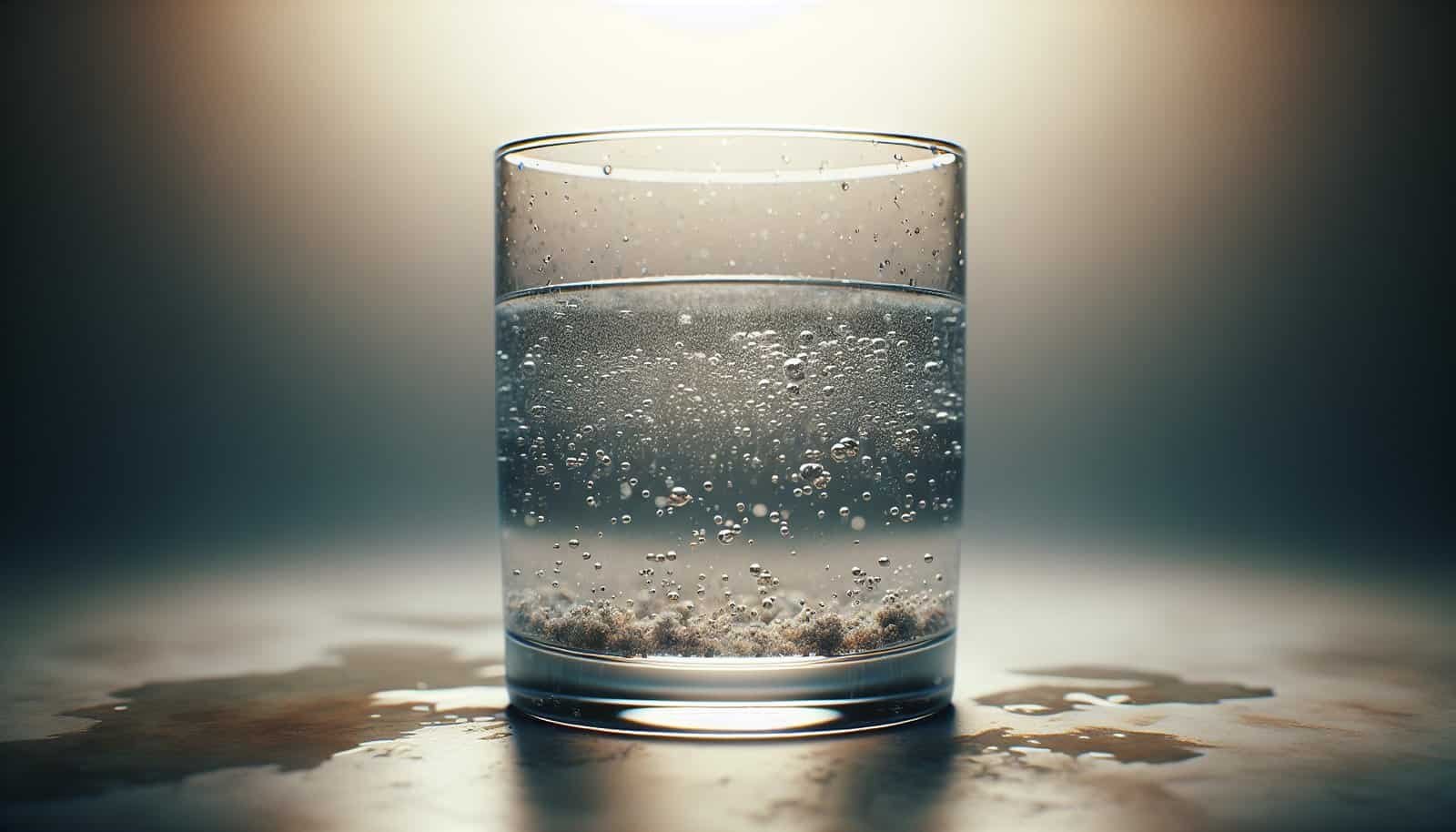?Have you noticed anything unusual about the water coming from your well — a strange smell, odd color, or a change in how your household appliances behave?

What Are Signs Of Well Water Contamination?
Understanding signs of well water contamination is important for protecting your health, your home, and your property. You rely on your well for drinking, cooking, bathing, and gardening, so recognizing early warning signs helps you take action quickly. This article outlines sensory clues, health-related symptoms, plumbing and appliance indicators, common contaminants and their sources, testing methods, treatment options, and practical next steps you can take.
Why you should pay attention to your well water
Your well is a private water source, which means the responsibility for testing and maintenance falls largely on you. Unlike municipal water systems, wells are not regulated by public health departments on a routine basis, so changes in water quality can go unnoticed unless you pay attention. Regular observation and testing help you catch contamination before it affects your family or damages your property.
Sensory signs: what your senses can tell you
Your senses are the first line of defense when it comes to detecting contamination. Taste, smell, appearance, and texture can provide immediate clues that your water quality has changed.
Strange taste
If your water tastes metallic, bitter, salty, or otherwise off, that could indicate contamination. Different tastes may be associated with different contaminants: metallic or bitter tastes can indicate heavy metals like iron, manganese, or copper; a salty taste may point to high levels of sodium or chloride.
Unusual odors
Smell problems are often easier to notice than taste. Rotten egg or sulfur-like smells typically indicate hydrogen sulfide gas, which can be produced by sulfate-reducing bacteria or by natural geological processes. A gasoline or solvent smell can signal volatile organic compounds (VOCs) such as petroleum or industrial solvents. A chlorine smell can show that the water has recently been disinfected or that your well has been treated.
Discoloration and cloudiness
Clear water turning yellow, brown, red, or blue-green is a clear sign that something is wrong. Brown or reddish discoloration usually means iron or manganese or disturbed sediments. Yellow tint can be from natural organic matter, while blue-green tints may indicate copper corrosion. Cloudy or milky water (turbidity) often points to suspended particles or microbial growth.
Visible particulates and sediment
If you see fine particles, sand, or rust flakes in the water or at the bottom of your glass, that can be sediment ingress from a damaged or poorly constructed well, or corrosion from pipes. Sudden increases in sediment after heavy rain can suggest surface runoff entering the well.
Oily film or sheen
An oily film on standing water or a rainbow sheen can indicate petroleum contamination or the presence of certain organic chemicals. These require immediate attention, as they can be toxic and persistent.
Health-related signs: symptoms to watch for
If contaminated water is used for drinking or cooking, it can cause a range of health effects. Some contaminants produce immediate symptoms; others cause chronic health issues after long-term exposure.
Gastrointestinal illness and stomach upset
Diarrhea, vomiting, nausea, stomach cramps, or fever that appear after consuming water may indicate microbial contamination — bacteria (E. coli, coliforms), viruses, or parasites like Giardia and Cryptosporidium. These symptoms can be acute and require prompt action.
Skin, eye, or respiratory irritation
Rashes, itchy skin, burning eyes, or respiratory problems when showering or bathing can point to chemical irritants or pathogens. Chlorine can cause respiratory issues in sensitive individuals, while certain chemicals can cause dermatitis or respiratory irritation.
Chronic health issues
Long-term exposure to contaminants such as arsenic, nitrate, lead, or certain organic chemicals can lead to serious health outcomes including neurological problems, reproductive issues, cancer risk, and developmental issues in children. If you suspect chronic contaminants, testing and remediation are essential.
Strange tastes in food or beverages
If beverages like coffee or tea taste off when brewed with your water, or if canned or frozen foods taste unusual after washing with well water, that could be a sign of contamination affecting flavor.
Plumbing, appliance, and household signs
Water contamination can reveal itself through effects on your home infrastructure and appliances. Paying attention to these signs helps you spot issues early.
Staining on fixtures and laundry
Rust-colored stains on sinks, tubs, toilets, and clothing are often caused by iron or manganese. Blue-green stains around faucets or on fixtures indicate copper corrosion, possibly from acidic water or high dissolved oxygen. Brown or yellow stains on laundry can show high levels of organic matter or iron.
Clogged filters and shortened appliance life
If water filters, softeners, or reverse osmosis membranes are clogging more frequently, or if your water heater, dishwasher, or washing machine shows increased wear, sediment or mineral overload may be present. This can shorten the lifespan of appliances and increase maintenance costs.
Low water pressure or sand in lines
Sand, grit, or a sudden drop in water pressure can indicate a damaged well screen or casing breach allowing sediment into the aquifer. Well pumps can become damaged by abrasive particles.
Corrosion and pinhole leaks
If you notice increased leaks in plumbing, rusting hot water heaters, or pinhole leaks in copper pipes, the water chemistry may be corrosive (low pH, high chloride, high dissolved oxygen) or contain aggressive minerals.

Table: Quick reference — signs, likely causes, and initial actions
| Sign you notice | Likely causes | Immediate actions you should take |
|---|---|---|
| Rotten egg smell | Hydrogen sulfide; sulfate-reducing bacteria | Stop drinking; boil does not remove H2S — get water tested; consider shock chlorination |
| Metallic or bitter taste | Iron, manganese, copper, lead | Stop using for drinking until tested; flush taps; test for metals |
| Gasoline/solvent smell | Petroleum contamination, VOCs | Stop using; avoid boiling; contact environmental authorities and test immediately |
| Cloudy/turbid water | Sediment, microbial growth | Avoid consumption; let water settle then sample; test for turbidity and microbes |
| Brown/rust stains | Iron, manganese, disturbed sediments | Test for iron/manganese; clean fixtures; check well for disturbance |
| Blue-green stains | Copper corrosion | Test for copper and pH; check corrosion control; avoid consuming if high |
| Gastrointestinal illness | Microbial contamination | Stop drinking; use bottled water; get household tested for coliforms and E. coli |
| Oily film or sheen | Petroleum hydrocarbons, organic chemicals | Stop consuming; test for VOCs; contact authorities if large spill suspected |
| Sand or grit at tap | Damaged well screen or casing | Stop using non-essential water; have well inspected and pump checked |
Common contaminants: what they are and what they do
Several contaminants are commonly found in private wells. Each has distinct sources, health risks, and treatment methods.
Bacteria and viruses
- What they are: Microbial contaminants include total coliforms, E. coli, Giardia, Cryptosporidium, norovirus, and other pathogens.
- Sources: Surface water intrusion, faulty well caps, septic system failures, livestock runoff.
- Health effects: Gastrointestinal illness, fever, dehydration; young children, elderly, and immunocompromised are at higher risk.
- Treatment: Chlorination, UV disinfection, boiling (temporary), and fixing well sanitary conditions.
Nitrate and nitrite
- What they are: Nitrate (NO3-) and nitrite (NO2-) often come from fertilizers, septic systems, and manure.
- Sources: Agricultural runoff, septic leakage, failing sewage systems.
- Health effects: Methemoglobinemia (“blue baby syndrome”) in infants; possible links to other long-term health concerns.
- Treatment: Ion exchange, reverse osmosis, distillation; source control through better septic management and fertilizer practices.
Heavy metals (arsenic, lead, copper)
- What they are: Elements leached from rocks or introduced by human activity.
- Sources: Natural geological deposits (arsenic), corroding plumbing (lead, copper), industrial pollution.
- Health effects: Arsenic — cancer risk, skin problems; lead — neurological damage, especially in children; copper — gastrointestinal upset and liver/kidney effects in high doses.
- Treatment: Reverse osmosis, specialized adsorption filters, corrosion control, replacing lead-containing plumbing.
Iron and manganese
- What they are: Naturally occurring metals that cause staining and taste issues.
- Sources: Groundwater contact with minerals.
- Health effects: Generally not a severe health risk at typical levels but can cause staining, metallic taste, and clogging of appliances.
- Treatment: Aeration/oxidation followed by filtration, water softeners for certain forms.
Hydrogen sulfide
- What it is: A gas that produces a rotten egg smell.
- Sources: Natural bacterial activity or geology.
- Health effects: Low concentrations are mainly a nuisance; higher levels can cause nausea or respiratory irritation.
- Treatment: Aeration, activated carbon, chlorination depending on concentration and source.
Volatile Organic Compounds (VOCs)
- What they are: Organic chemicals such as benzene, toluene, trichloroethylene (TCE), and gasoline components.
- Sources: Industrial spills, leaking underground storage tanks, improper disposal of chemicals.
- Health effects: Acute effects include headaches and dizziness; chronic exposure can be carcinogenic and harmful to the liver, kidneys, and nervous system.
- Treatment: Granular activated carbon (GAC), air stripping, advanced oxidation processes, source cleanup.
Pesticides and herbicides
- What they are: Agricultural chemicals used for crop protection.
- Sources: Runoff from fields, aerial spraying, residential lawn care.
- Health effects: Vary by compound; can include endocrine disruption, cancer risk, and acute poisoning.
- Treatment: GAC, reverse osmosis, specialized adsorption media, and preventing surface runoff.
Radon
- What it is: A radioactive gas produced by decay of uranium in rock.
- Sources: Natural geologic formations; radon can dissolve into groundwater and be released during water use.
- Health effects: Inhalation of radon is linked to lung cancer risk; ingesting radon in water is a smaller but relevant concern.
- Treatment: Aeration treatment systems, granular activated carbon (with caution due to radioactivity in GAC media).

Table: Common contaminants, typical signs, and treatment options
| Contaminant | Typical signs in water | Health concerns | Common treatment options |
|---|---|---|---|
| Coliforms, E. coli | Cloudy water, odorless often, GI illness | Gastroenteritis, fever | Shock chlorination, chlorination system, UV, repair well sanitary seal |
| Nitrate/nitrite | No taste/odor change (saltier if high) | “Blue baby syndrome”, other risks | RO, ion exchange, distillation, source control |
| Arsenic | Often no smell/taste | Cancer, skin lesions | RO, adsorption media (iron-based), deep well sourcing |
| Lead | Metallic taste, blue-green stains (copper)/no direct sign | Neurological damage | Replace pipes, corrosion control, RO |
| Iron/manganese | Rust stains, metallic taste | Nuisance effects | Oxidation + filtration, water softener (for manganous form) |
| Hydrogen sulfide | Rotten egg smell | Nausea, irritation | Aeration, carbon, chlorination |
| VOCs (BTEX, solvents) | Gasoline/chemical smell | Neurological, liver, cancer risk | GAC, air stripping, RO, source cleanup |
| Pesticides | Odd tastes/odors, acute illness | Varies; some are carcinogens | GAC, RO, prevent runoff |
| Radon | No taste/odor change; released into air while showering | Lung cancer risk | Aeration, GAC (with careful disposal) |
How contamination gets into wells: common sources
Understanding how contaminants reach your well helps you prevent future problems and choose the correct remediation.
Surface runoff and floodwater
Heavy rains can cause surface water to flow into poorly sealed or shallow wells, carrying bacteria, fertilizers, pesticides, and organic matter. If your well is near low-lying areas or lacks a proper sanitary seal, surface events are a major risk.
Septic system failure
A failing septic system near your well can leach nitrates, bacteria, and viruses into the groundwater. Regular septic maintenance and appropriate setback distances from wells are critical.
Agricultural activities
Fertilizer application, manure spreading, and pesticide use can increase nitrate and chemical levels in groundwater, especially in shallow aquifers.
Industrial spills and leaking underground storage tanks
Chemicals, solvents, and petroleum products can migrate into groundwater from spills, improper disposal, or aging tanks, introducing VOCs and other hazardous substances.
Natural geologic sources
Some contaminants like arsenic, radon, and elevated iron are naturally occurring and result from local geology and groundwater-rock interactions.
Corroding plumbing and well components
Lead, copper, and other metals can enter your water through corroding pipes, solder, or well components. Water chemistry (pH, alkalinity, dissolved oxygen) affects corrosion rates.

Testing your well: routines and procedures
Testing is the only reliable way to know what’s in your water. Visual and sensory cues help you prioritize testing, but laboratory analysis provides definitive results.
Basic testing schedule
- Test annually for bacterial indicators (total coliforms and E. coli).
- Test annually for nitrate, especially if you have infants or are near agricultural areas.
- Test every 3–5 years for a broad panel (pH, alkalinity, hardness, iron, manganese, sodium, chloride).
- Test whenever a change in water quality is noticed.
- Test for VOCs, arsenic, radon, or other site-specific contaminants when there’s a reason to suspect them (proximity to industry, natural geology, new construction, etc.).
How to collect a proper sample
Follow the laboratory’s instructions carefully. Typical steps include:
- Use the sterile bottle provided by the lab.
- Run the cold water for a few minutes before collecting unless instructed otherwise.
- Disinfect the tap with alcohol if required.
- Fill the bottle to the indicated level and seal.
- Keep samples cool and deliver to the lab promptly, often within 24 hours for bacterial tests.
Types of tests and what they detect
- Bacterial tests: total coliforms, E. coli.
- Standard chemistry: pH, hardness, alkalinity, iron, manganese, sodium, chloride, sulfate.
- Metals: arsenic, lead, copper, mercury.
- Nutrients: nitrate, nitrite, phosphate.
- Organic chemicals: VOCs, pesticides, PCBs.
- Radioactivity: radon, uranium, gross alpha/beta.
- Turbidity and suspended solids.
Interpreting results
Compare lab results to EPA or state health department guidance values and Maximum Contaminant Levels (MCLs) for public water. Private wells aren’t regulated, but these standards provide useful benchmarks. If results exceed recommended levels, consult a certified water professional for treatment options.
Immediate steps to take if you suspect contamination
If you notice signs of contamination, act quickly to protect your household.
- Stop using the water for drinking and food preparation. Use bottled water or water from a safe alternative source.
- Avoid boiling water for chemical contaminants — boiling concentrates some chemicals.
- Use short showers to reduce inhalation exposure if VOCs or radon are suspected.
- Contact a certified lab and arrange for testing immediately (bacterial tests are time-sensitive).
- If you have symptoms of illness, seek medical attention and inform the clinician that you suspect water contamination.
- If a petroleum spill, hazardous chemical spill, or sewage backup is suspected, contact local environmental or public health authorities.

Treatment and remediation options
Once you know what contaminant is present, you can select appropriate treatment. Often, multiple systems may be combined to address complex contamination.
Point-of-entry (whole-house) treatments
- Chlorination systems (continuous or periodic shock): Effective for bacterial control and reducing iron and manganese in some cases.
- Activated carbon filters: Remove many organic contaminants and improve taste and odor. Not reliable for nitrates, most metals, or microbes without additional disinfection.
- Aeration systems: Good for hydrogen sulfide, radon, and some VOCs; they volatilize gases and remove them from water.
- Water softeners: Exchange calcium and magnesium for sodium or potassium to reduce hardness; also help with some manganese/iron forms.
- Sediment filtration: Protects appliances from sand and grit.
Point-of-use (tap-level) treatments
- Reverse osmosis (RO): Highly effective for nitrates, many metals, fluoride, and some organics; best used at kitchen tap for drinking and cooking.
- Under-sink carbon filters: Good for VOCs and improving taste/odor.
- Distillation: Removes a broad spectrum of contaminants but is energy-intensive.
Well rehabilitation and source control
- Shock chlorination: Effective for disinfecting wells contaminated with bacteria but not for structural breaches or chemical contamination.
- Well repair or replacement: If casing is cracked or the well cap is missing, physical repairs are needed to prevent surface contamination.
- Septic repair and improved setback distances: Reduce nitrate and bacterial contamination from failing septic systems.
- Land management: Restrict chemical use near wellheads, establish protective zones, and regrade to prevent runoff.
Professional help
Hire a licensed well contractor, certified water treatment specialist, or hydrogeologist for complex issues like VOCs, persistent microbial contamination, or major repairs. They can recommend and install the correct treatment, test effectiveness, and provide long-term solutions.
Monitoring and maintenance
Cleaning a well isn’t a one-time fix. Ongoing monitoring and maintenance are essential to ensure safety.
- Keep records of all tests, repairs, and treatments.
- Re-test after any well work, septic repair, or flooding.
- Maintain a yearly inspection routine for well components (cap, seal, pump).
- Replace filter cartridges and media per manufacturer instructions.
- Check for changes after heavy rain, construction nearby, or changes in land use.
Table: Recommended testing frequency
| Test type | Recommended frequency | Notes |
|---|---|---|
| Bacterial (coliform/E. coli) | Annually and after any contamination event | Immediate action if positive for E. coli |
| Nitrate/nitrite | Annually (more often if near agriculture) | Critical for infant safety |
| Standard chemistry (pH, hardness, iron, manganese) | Every 3–5 years | More often if you notice changes |
| VOCs/pesticides | When suspected or if nearby sources exist | Use certified lab |
| Arsenic/radon/uranium | Every 3–5 years if found previously or geology suggests risk | These are long-term concerns |
| After repair or shock chlorination | Within 1–2 weeks | Confirm effectiveness |
Frequently asked questions (FAQs)
Can you smell or taste everything that contaminates your water?
No. Many contaminants — like arsenic, nitrate, and radon — have no taste or smell. While sensory cues are valuable, testing is the only reliable method to detect certain chemicals and radioactive elements.
Is boiling water always safe?
Boiling kills bacteria, viruses, and parasites, but it does not remove chemical contaminants and can concentrate some (like nitrates). If you suspect chemical contamination, do not rely on boiling — get lab testing and use alternative safe water.
How long does it take to fix a contaminated well?
It depends on the contaminant and the source. Bacterial contamination might be resolved with chlorination and repairs in days or weeks. Chemical contamination, especially VOCs or heavy metals, may require longer-term treatment systems, source remediation, or even well replacement.
Can you drink water after shock chlorination?
After proper shock chlorination and confirmation by lab testing (typically negative for coliform/E. coli), water can be used for drinking. Always follow the disinfectant manufacturer and health department guidance.
When to call professionals and authorities
- If you detect gasoline, solvents, or chemical odors: contact local environmental authorities and a licensed hydrogeologist.
- If tests show VOCs, pesticides, high arsenic, or radionuclides: consult a certified water treatment specialist.
- If widespread illness occurs in your household after water use: seek medical help and notify your local health department.
- If your well shows structural damage, sand ingress, or dramatic water level changes: call a qualified well contractor.
Practical tips to protect your well water
- Maintain a protective radius around your well free from chemicals, pesticides, and livestock operations.
- Ensure proper septic system maintenance and adequate setbacks between tanks and wells.
- Seal your well cap and keep the area sloped away from the well to prevent surface water pooling.
- Avoid storing chemicals, fuel, or hazardous materials near the well.
- Keep a written log of water tests and maintenance activities.
- If replacing appliances or plumbing, avoid solder or materials that contain lead.
Sample recordkeeping checklist for your well
- Date of well construction and permit details
- Well depth and casing details
- Annual test results (bacteria, nitrate)
- Dates and results of comprehensive testing (metals, VOCs, radionuclides)
- Dates of repairs, pump replacements, and disinfecting events
- Names and contact info for contractors and labs used
- Observed changes in water quality and corresponding dates
Final thoughts: acting sooner is better
You have a responsibility to pay attention to changes in your water because early action reduces health risk, prevents property damage, and often saves money. Sensory observations, combined with a sensible testing schedule and appropriate remediation, will protect your household. If you ever feel uncertain, consult certified professionals and local health authorities for guidance matched to your region and geology.
If you want, I can help you create a testing checklist tailored to your situation, recommend steps based on specific symptoms you’ve noticed, or help interpret lab results once you have them. What changes in your water have you noticed recently?
